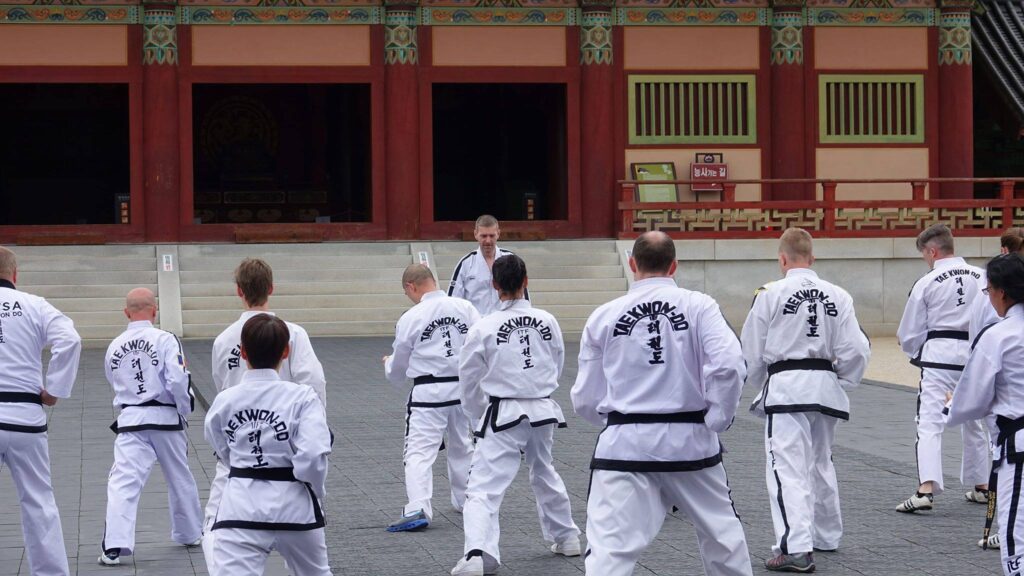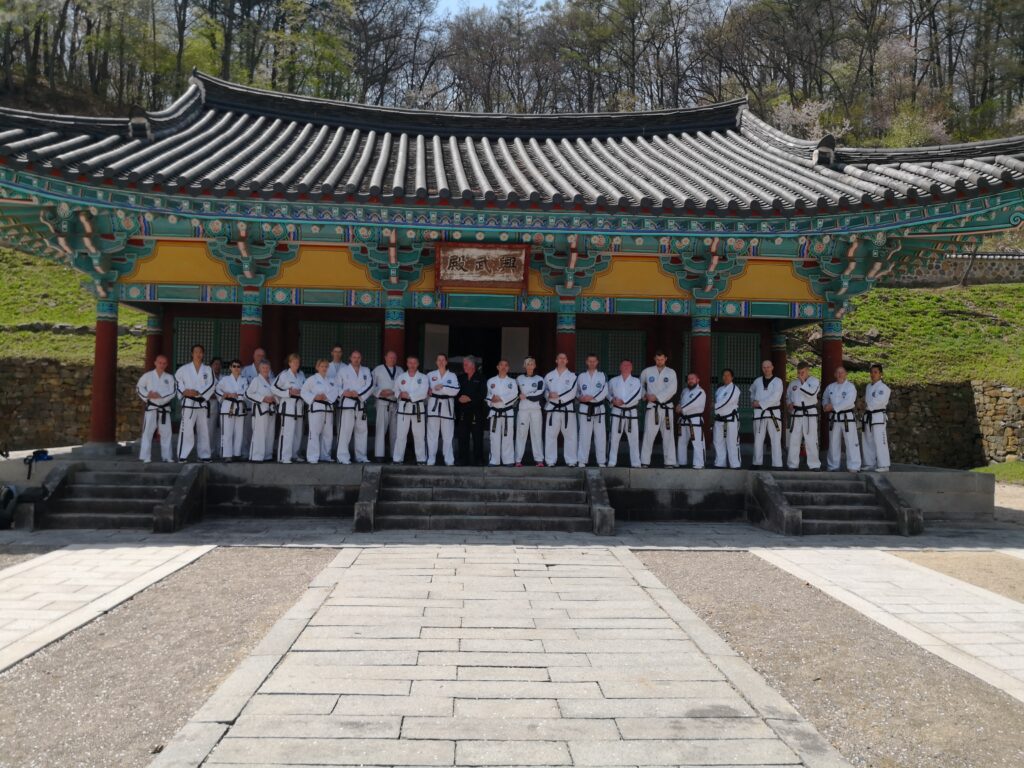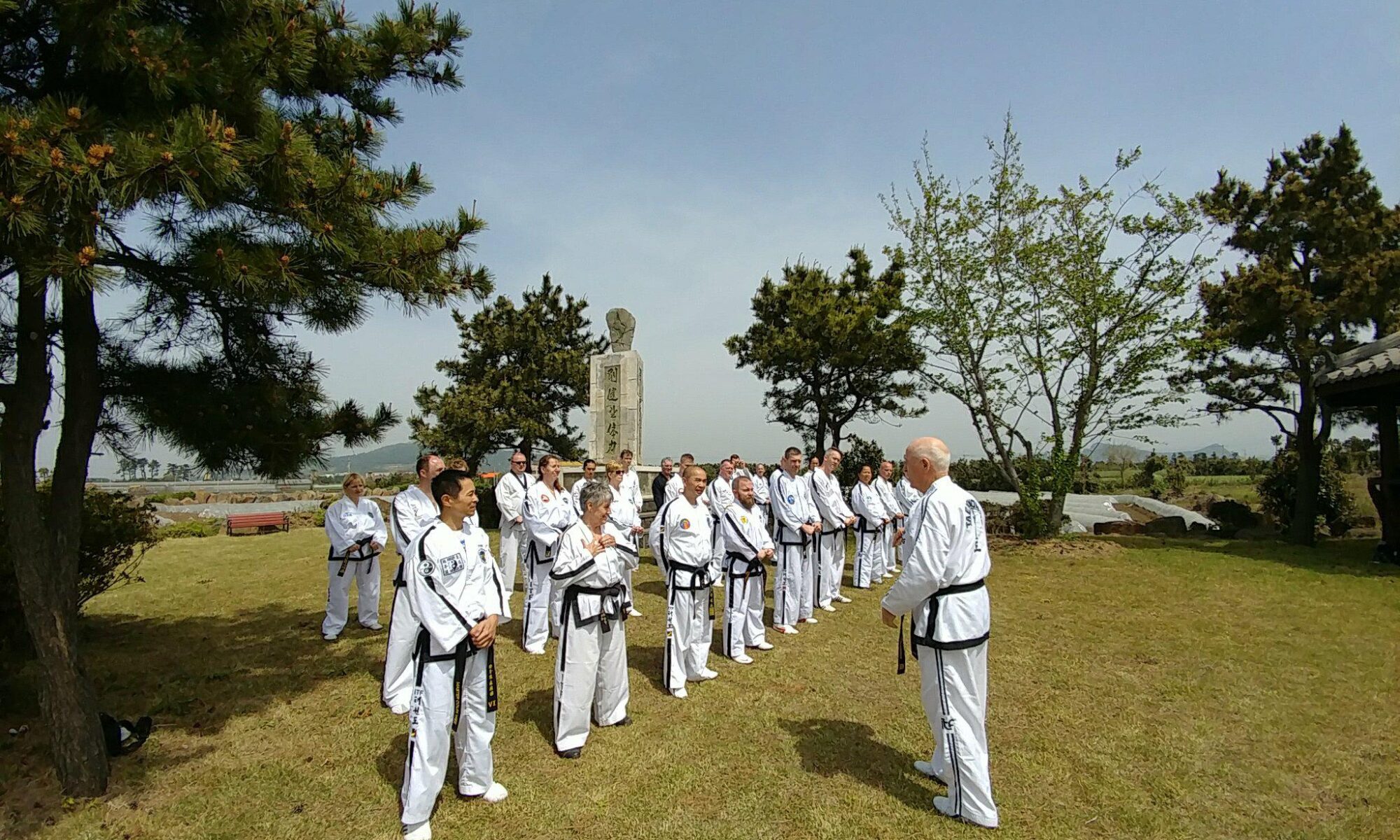One valuable aspect of martial arts training is the practice of mental visualization. Mental visualization is the process of creating vivid mental images or scenarios in your mind. It involves imagining yourself performing techniques, strategies, or movements with precision and success. While etiquette rules may seem unfamiliar at first, they play a significant role in cultivating a mindset that complements your training and martial readiness, including the practice of mental visualization.
By adhering to etiquette guidelines, you learn to enter the training hall with intention and focus. As you bow upon entering, it serves as a physical and mental cue to leave behind your worldly concerns and distractions. The act of bowing signifies a transition from the outside world to the training space, creating a mental shift that helps you become present and ready for the challenges ahead.
Etiquette also creates an environment of respect and discipline, which is essential for mental visualization. When you enter a training hall with a sense of respect for the space, your instructors, and your fellow students, you create a positive and supportive atmosphere that encourages growth and learning. This mindset allows you to fully engage in mental visualization exercises.
In the training hall, etiquette helps establish a sense of safety and trust. When you know that everyone is following the same rules and guidelines, you can focus your energy on your training without worrying about unnecessary distractions or potential harm. This sense of safety enables you to open up mentally and visualize techniques and movements more effectively.
Furthermore, etiquette prepares you mentally for the training you will receive. The structure and rituals involved in following etiquette provide a framework that allows you to transition from one training phase to another smoothly. Each etiquette practice, such as bowing to the instructor or following specific sequences, helps you prepare your mind for the upcoming training session, and resets you from the previous exercise. Such physical rituals cultivate a mindset of readiness and receptiveness, allowing you to absorb instructions and feedback more effectively.
By practicing mental visualization in conjunction with etiquette, you can enhance your martial arts training in several ways. First, mental visualization allows you to reinforce your ‘muscle memory’ (your mind-body connection) and technique execution. By mentally rehearsing techniques and movements, you strengthen the neural connections associated with those actions, leading to improved physical performance.
Second, mental visualization helps develop focus and concentration. As you create vivid mental images of successful performances, you train your mind to remain focused on the task at hand. This enhanced mental focus can translate to improved performance during actual training or sparring situations.
Third, mental visualization aids in developing strategy and tactical awareness. By visualizing different scenarios and situations, you can explore different strategies, anticipate your opponent’s moves, and plan your own actions effectively. This mental rehearsal allows you to develop a strategic mindset and make more informed decisions during training and martial arts practice.
While etiquette guidelines in the training hall may initially feel unfamiliar, they play a vital role in fostering a mindset that complements your training and prepares you mentally. Mental visualization, complemented by the rituals associated with etiquette, allows you to enter the training space with intention, leave distractions behind, create a safe and supportive environment, and enhance your focus, technique, and strategic thinking. Embracing etiquette and practicing mental visualization can significantly benefit your martial arts journey, both on and off the mat.
Etiquette in the training hall is not meant to make you socially uncomfortable, change who you are, or confuse you on how to behave. Don’t let the extensive etiquette guidelines discourage you. Learn them to understand the lessons they teach.

General Guidelines
- Arrive early to warm up before class; inform your instructor in advance if you can’t come, disclose any pertinent issues to your instructor which might affect your performance or safety whilst practicing.
- Review material from previous classes.
- Wear a clean and presentable uniform.
- Ensure your feet are clean.
- Practice personal hygiene.
- Prioritize safety by using controlled techniques, seeking collaborative exchanges with training partners, keeping your fingernails trimmed short, removing jewelry, regularly exercising for strength and flexibility, getting enough sleep, and staying hydrated.
- Avoid attendance if you are unwell; do not spread your illness to fellow practitioners.
Greeting Instructors upon Entering the Training Hall:
Upon entering the training hall, practitioners should bow first to the highest-ranking instructor present, followed by bowing to each instructor in descending order of rank. When approaching your instructor, use formal greetings such as Mr./Mrs./Ms., their official organizational title, or the appropriate title for their specific martial art lineage (Sahbumnim for Korean arts, Sensei for Japanese arts, and Sifu for Chinese arts). When an instructor addresses you, respond promptly with “sir” or “ma’am,” avoiding informal language. If you don’t know the instructor’s name, use “Sir” or “Ma’am” until you can properly greet them by name.
Bowing Protocol:
Bowing is a form of greeting and respect, similar to a handshake. The angle and duration of a bow vary depending on the situation. In our dojang, the general bow is a 30-degree forward bow from the waist, lasting about 3 seconds. During the bow, men keep their hands flat on their sides, while women may place their palms on the front of their thighs. Avoid nodding your head and keep your eyes slightly lowered toward the angle of the bow while maintaining awareness of the person you’re bowing to. If someone from a different culture bows to you in acknowledgment or greeting, it’s customary to return the bow. This may lead to a series of bows, depending on the situation. A 5-degree bow is a simple greeting or acknowledgement, 15 degrees is a common salutation, 30 degrees is a respectful bow to show appreciation, 45 degrees signifies deep respect, extreme gratitude, or an apology, and a 90-degree bow is reserved for ceremonial occasions.
Approaching an Instructor in a Group:
If you approach an instructor while in a group, allow the highest-ranking member of your group to initiate the greeting or conversation unless you’re invited by that member or the instructor to speak.
Stepping onto the Training Area:
Before stepping onto the mat, place your footwear facing outward and off the mat. Bow before stepping onto the mat.
Regular Class Start:
After the regular class starts, it is important to follow the instructions and commands given by the instructor. When the instructor claps his hands to signal the start of class, all students should immediately stop what they are doing and move into a standing formation based on seniority. The highest ranking student will give the commands for the class, as instructed by the instructor.

Formal Class Start:
During formal class, the instructor will again clap his hands to gather the attention of all students. At this point, students should stop what they are doing and move into a kneeling formation based on seniority. Assistant instructors will position themselves on the left edge of the room, facing both the instructor and the students. Students will then wait for the commands to bow to the flags or kamidana, bow to the instructor, and bow to the assistant instructors.
To kneel properly, make sure there is a fist width between your knees and cross your right toe over your left. Keep your back upright and rest your palms on your thighs. When bowing, extend your left hand in front of you, followed by your right hand, forming a diamond shape on the floor. Lower your head to about a hand span above your hands. When sitting back up, pull your right hand up first, followed by your left hand.
Recitation of Tenets or Precepts:
During the class, there may be a recitation of precepts or tenets led by the instructor or assistants. Pay attention to these recitations and be aware that different schools may have variations in the specific wording.
On Lateness:
If you arrive late to class due to circumstances beyond your control, enter the dojang quietly and wait at the edge of the mat. Wait for an instructor to acknowledge you before bowing in and quietly joining the class. Being punctual is important, as habitual tardiness can disrupt the training environment and show disrespect to fellow students.
Talking in Class:
While in class, it is important to maintain a focused and serious attitude. Avoid extraneous talking, coaching, or commenting on other students’ techniques, unless it is necessary for safety or constructive feedback. If you have observations or difficulties, discuss them in a respectful manner that does not disrupt the class or interrupt the instructor.
On Having Fun:
Remember to enjoy yourself during class, but always work with dedication and effort. Follow the instructions given by your instructor and strive to repeat the techniques as demonstrated, without modifying them unless specifically encouraged to do so.
Following Training Instruction:
If you have any concerns about the training, do not request special treatment, challenge opponents, argue with the instructor, or compare different instructors. Instead, communicate with your partner about any safety issues or discuss the matter with the instructor when appropriate. Focus on your own training and support the progress of your fellow students.
Walking Around a Group:
When moving around the training area, be respectful and mindful of others. Choose to cross behind people who are practicing, seated, or waiting for instruction. Never cross between the instructor and the students he is teaching, unless you are physically unable to do so. In that case, apologize and cross while holding your right hand in front of you, palm facing left, and lowering your head.
Compliance with General Orders:
Compliance with general orders is essential. When asked to move into formation within the dojang, do so quickly without shouting any acknowledgments. Refrain from using language you are not familiar with and avoid swearing. Maintain a respectful and disciplined demeanor at all times.
Begin and End with a Bow:
Always begin and end any practice or interaction with a bow. Before engaging in practice with your partner, bow first. When finished, bow to conclude the session. If you are asked to assist the instructor with a demonstration or as a partner during the lesson, approach the instructor, bow, and stand ready for instruction. If the instructor turns away from you, drop to your left knee with your hands folded on your right. When the instructor turns back to you, quickly get up and assume the ready position until told otherwise. Remember to thank the instructor after the demonstration or practice session by bowing.
Working Collaboratively:
Throughout the class, maintain a respectful attitude towards your fellow students. Treat everyone with courtesy, regardless of their rank or skill level. If you are working with a partner, always show consideration for their safety and well-being. Avoid excessive force or aggressive behavior during training. Remember that martial arts are not about dominating others but about self-improvement and mutual growth.
Leaving the Training Area:
If you need to leave the training area during class for any reason, seek permission from an instructor before doing so, explaining the reason for your exit. If you need to use the restroom or take a break, do so in a timely manner, but try to minimize your absence, and do not disrupt the class on your return. If you are injured, please make sure to inform the instructor and communicate if you require medical attention.
End of Class:
At the end of the class, the instructor will again gather everyone’s attention. Follow the instructions given by the instructor for the closing formalities. This may include bowing to the flags or shomen or kamidana, bowing to the head instructor, and bowing to the assistant instructors. Pay attention to the specific commands and sequences and follow them accordingly.
After the class is officially dismissed, it is customary to thank the instructor and the assistant instructors for their guidance. You can do this by approaching them, bowing, and expressing your gratitude. It is also a good practice to show respect to your training partners by acknowledging their efforts and thanking them for their cooperation during the class. Additionally, if you are unable to make the following training session, this is a good time to advise your instructor and apologise for the lack of attendance.
When you return home, wash your uniform, air-dry equipment if needed, and revise your material before your next class.

Visiting External Schools or Seminars:
The principles and etiquette discussed here may vary slightly depending on the specific martial art style or school you are training in; it is important to ask ahead about the specific rules and customs of any martial arts school you visit and follow them accordingly. This extends to the insignias you use on your uniform, the grade you display, and the fees you might have to pay on the day. It might also be appropriate to bring a small gift or token of appreciation when visiting a school for the first time. Refrain from taking photos or videos until you have sought permission to do so.
By adhering to the guidelines and etiquette of the class, you will contribute to a positive and respectful training environment. Martial arts training is not only about physical techniques but also about developing discipline, respect, and character. Embrace the opportunity to learn and grow both as a martial artist and as an individual.


